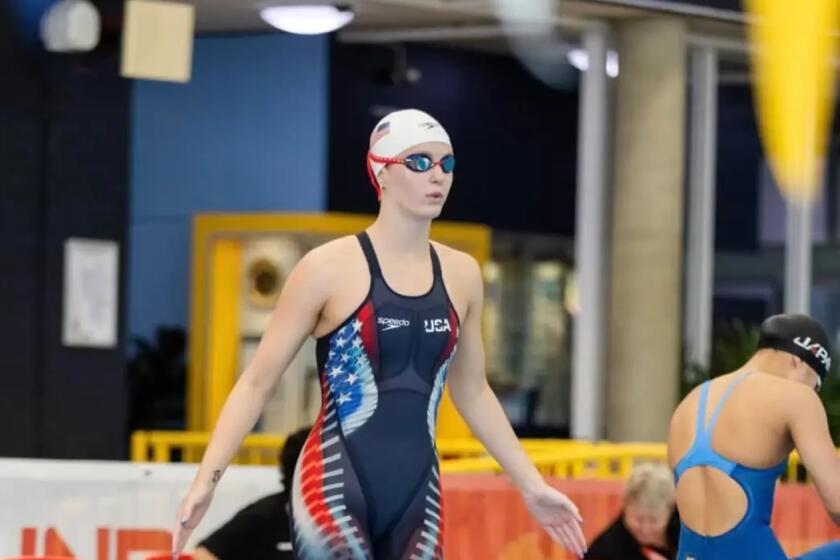Sound of ‘Pong’ Replacing ‘Swack’ : Aluminum Alloy Bats Move to Take Over in Baseball
- Share via
The sweet and solid “swack” that long has heralded the onset of summer in America has a new ring--”pong.”
On virtually every Little League field, on high school and college diamonds and church league softball fields, wooden baseball bats have mostly gone the way of scratchy flannel uniforms.
Aluminum alloy bats, practically indestructible, have replaced breakable wood bats.
Only in pro baseball and some college summer leagues does the tradition of wood bats survive.
Aluminum and a variety of new fiber components also have replaced wood in most other sports.
Many NHL players use aluminum hockey sticks. Wooden tennis rackets are passe, replaced by space-age synthetics. Wooden golf shafts are history. Ski poles, once bamboo, now are aluminum.
One of the companies in the forefront of the industry, Easton Aluminum, has mushroomed from one worker, founder Doug Easton, to about 700 employees.
Jim Easton, son of the company’s late founder, said his father began making wooden arrows for competition in the family garage in 1922.
“He finally got so frustrated trying to match the weight and balance of 12 wooden arrows that he started using aluminum, making tournament-quality arrows by 1939,” Easton said from the company’s headquarters in Van Nuys.
The younger Easton ventured out to become an engineer with an aircraft company, but returned to his father’s business in 1962, when there were five employees.
“It’s a fun business,” he said. “We have a large engineering staff, are always trying to crank out new and better products.”
Aluminum golf shafts became popular in the late 1960s, when Arnold Palmer won some tournaments using them, Easton said. In the early 1970s, aluminum baseball bats came onto the scene.
In the early ‘80s, aluminum hockey sticks began to catch on, and, Easton said, “We developed that, and today aluminum hockey sticks are being used by more than 50 NHL players.”
Easton said the progression in many sports has been similar.
“History seems pretty parallel in most sports,” he said. “They started out with wood, went to steel, then aluminum.
“Now it tends to be going to new composites like graphite and carbon fibers, in connection with aluminum. With a hybrid, you can get the superior qualities of both.
“Two universal factors make almost any piece of sports equipment better, being lighter and being stiffer. If you can achieve that, you can make a better product in almost every sport. It seems like every year we end up with new or improved fibers, and every time, there’s a new generation of sporting goods products.”
Tradition often has slowed or blocked the use of new materials. Pro baseball provides one example, with purists claiming that metal bats give hitters too much of an advantage.
“People claim they (aluminum bats) will destroy records,” Easton said. “But if you talk about records, you should look at the distance of fences, for instance, in different parks.
“The sound is not the thing. It’s because wood is the tradition. But AstroTurf wasn’t considered that acceptable when they brought it in. Change comes slowly, but I think someday they (professional teams) will be using aluminum or other materials.”
Engineers have developed ways to eliminate the metallic sound of aluminum bats striking a baseball. Easton said his company has developed a bat that, if the ball is hit in the “sweet spot,” has a sound virtually identical to that of a wood bat.
But in some places, the metallic sound is preferred.
“In Japan, the louder the pong the better,” Easton explained. “They televise a lot of their high school games, and they like to hear that pong.
“We had constructed our bats to take some of that out of them, but we had to totally redesign our product for the Japanese market, make it ping louder than any other.”
More to Read
Go beyond the scoreboard
Get the latest on L.A.'s teams in the daily Sports Report newsletter.
You may occasionally receive promotional content from the Los Angeles Times.










